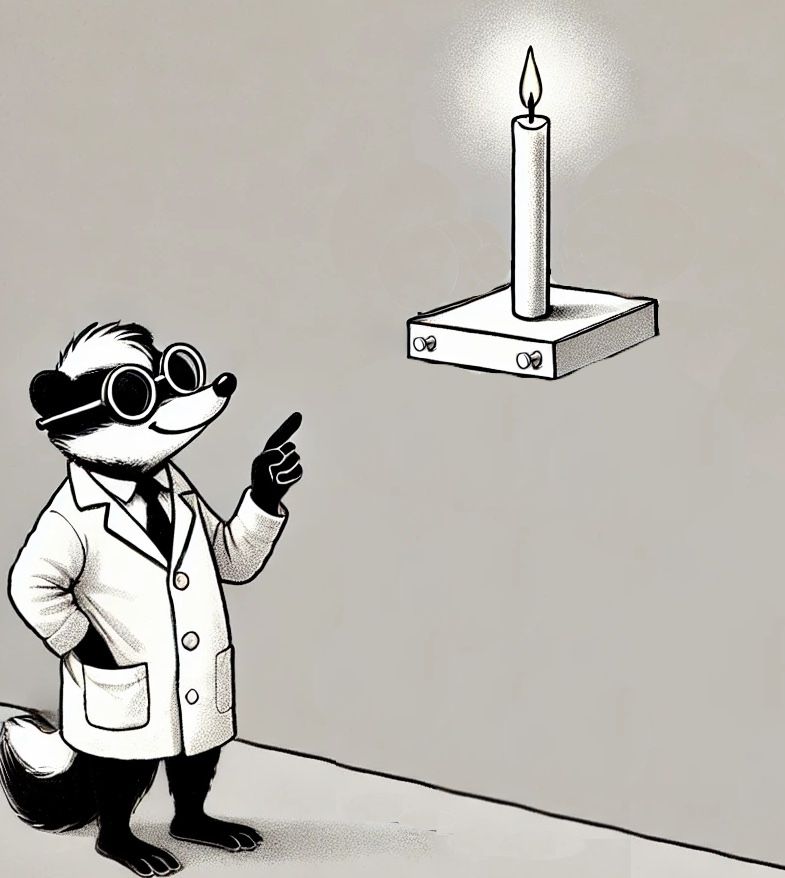How Can Problem Reframing Help Founders Validate Ideas
In a small Florida town, a young entrepreneur named Mia had opened a boutique selling handmade jewelry inspired by the sea. Her designs were unique and beautifully crafted, capturing the essence of the ocean's beauty. Despite her talent and the uniqueness of her products, Mia found her boutique struggling to attract more than a few customers each day. She had poured her savings into securing a prime spot on the main street, believing that visibility would naturally drive traffic to her store. However, the reality was disheartening, with sales barely covering the rent.
Frustrated and on the verge of giving up, Mia decided to take a step back and reassess her situation. She asked herself, "What if I got exactly what I asked for?" Imagining her boutique bustling with customers, Mia realized that even in this ideal scenario, her current business model relied too heavily on foot traffic, which was unpredictable and influenced by factors outside her control, like weather and seasonal tourism.
This moment of reflection helped Mia reframe her problem. She recognized that while her physical location was an asset, she was not leveraging the broader potential audience beyond the town. Mia decided to expand her reach by embracing an online presence. She launched an e-commerce website for her boutique, showcasing her jewelry with high-quality photos and stories about the inspiration behind each piece. To connect with her audience further, she started a blog and social media channels, sharing behind-the-scenes looks into her creative process, the lore of the coast, and how each piece of jewelry held a piece of the sea's mystery.
Mia also began attending craft fairs and pop-up markets in other towns and cities, bringing her sea-inspired jewelry to a wider audience. This approach not only diversified her revenue streams but also built a dedicated following of customers who were enchanted by her work and the stories it told.
Mia didn't know anything about problem hypothesis testing or problem reframing techniques, but by simply contemplating the question, "What if I got exactly what I asked for?" Mia was able to identify a more profound issue with her initial business strategy. This led her to pivot from relying solely on her physical boutique to embracing a multi-channel approach, which ultimately turned her business around. Her jewelry reached people far beyond the small coastal town, turning her once struggling boutique into a thriving online business with a loyal, engaged customer base passionate about the beauty and stories of the sea.
Startup founders are often faced with the formidable task of ensuring their innovations truly resonate with an underlying need. Enter Bernard Roth, the visionary behind Stanford's d.school and author of "The Achievement Habit," whose philosophy on problem reframing is a beacon for those navigating these waters. Roth’s wisdom teaches us to look beyond the immediate, often deceptive, surface of challenges to unearth opportunities ripe for impactful innovation. This journey into Roth's principles reveals a treasure map for startup founders, guiding them to validate and refine their ventures with precision and insight.
Bernard Roth’s approach to problem reframing has profound implications for startups, offering a roadmap to navigate the complex process of identifying and solving the right problems. This methodology not only encourages founders to challenge their initial assumptions but also to uncover opportunities for innovation that were previously unseen. Let’s delve deeper into how startups can practically apply Roth's insights, supplemented by a real-world example that showcases the transformative power of problem reframing.
1. Unearthing the Core Problem
The journey begins with a deep dive into the initial problem statement. Founders are urged to peel away the layers of their assumptions to discover the root issue. This exploration is critical because it’s easy to be misled by surface-level symptoms of a deeper problem. Engaging with potential users through interviews, surveys, and observation plays a pivotal role in this stage. It’s about listening intently to the stories, frustrations, and aspirations of your target audience to gain a nuanced understanding of the challenges they face. The aim is to identify not just any problem, but the most pressing problem that, when solved, unlocks significant value for the user.
2. The Art of Reframing
With a deeper understanding of the core problem, the next step is to reframe it from various perspectives. This reframing is an exercise in creativity and empathy, requiring founders to step into the shoes of their users, stakeholders, and even competitors. It’s about asking, "How else can we view this problem?" and "What are we missing?" This phase may involve redefining the problem in broader terms or breaking it down into more specific, solvable challenges. The goal is to open up new avenues for innovation by shifting the focus from a predefined solution to a flexible exploration of what could solve the problem more effectively.
3. Bridging Theory and Action
The transition from reframing to prototyping is where ideas are tested against the harsh light of reality. Founders must take their reframed problem statements and develop tangible solutions that can be iteratively tested with users. This stage is characterized by rapid prototyping, feedback loops, and continuous refinement. It's a process that embodies Roth’s ethos of learning by doing, where each iteration brings a clearer understanding of both the problem and the solution. The key here is flexibility and resilience, as founders may need to cycle back to reframing based on what they learn during testing.
Example: Airbnb
Airbnb's journey exemplifies the power of problem reframing in action. Initially, the founders aimed to solve a personal problem: earning extra money by renting out space in their apartment to offset the cost of rent. However, as they delved deeper, they realized the broader potential of their idea. Through conversations with users, they discovered a deeper, more pressing problem: travelers were seeking more than just accommodation; they wanted authentic, local experiences that traditional hotels couldn't offer.
This insight led to a significant reframing of Airbnb's business model. Instead of simply providing a platform for room rentals, Airbnb repositioned itself as a service that connects travelers with unique, local experiences, thereby tapping into a deeper emotional and experiential need. This reframing not only broadened Airbnb's market potential but also deeply resonated with users, fueling the company's explosive growth.
Airbnb’s story demonstrates the transformative impact of Roth’s problem reframing approach. By challenging their initial assumptions and continuously engaging with user feedback, the founders were able to pivot from a narrow solution to a groundbreaking business model that addressed a fundamental human desire for connection and discovery.
4. Run a Problem Reframing Workshop
Integrating Bernard Roth's problem reframing approach into a startup's discovery phase can be transformative, offering a structured path to uncovering deep insights and innovative solutions. A practical way to implement this methodology is through a dedicated workshop or exercise designed to challenge and expand the team's understanding of the problem space. Here’s a step-by-step framework for conducting a Problem Reframing Workshop, which can be seamlessly incorporated into your problem hypothesis or discovery sprint.
1. Preparation
Objective: Set the stage for effective reframing by gathering all necessary information and inviting diverse perspectives.
- Team Composition: Include individuals from various functions within your startup (e.g., product, marketing, customer service) to ensure a wide range of perspectives.
- User Insights: Compile existing user research, customer feedback, and any other relevant data that can shed light on the problem you're tackling.
- Materials Needed: Prepare tools for brainstorming and documentation, such as whiteboards, sticky notes, markers, and digital collaboration platforms for remote teams.
2. Define the Initial Problem Statement
Objective: Clearly articulate the current understanding of the problem your startup aims to solve.
- Activity: Begin the workshop by writing down the problem statement as it currently stands. This should be a concise sentence or two that captures the essence of the challenge.
- Discussion: Briefly discuss why this problem was identified and the assumptions that underpin this perspective. Acknowledge any biases or limitations in the current framing.
3. Dive Deeper with "The Five Whys"
Objective: Uncover the underlying layers of the problem by questioning the initial statement.
- Activity: Use the Five Whys technique to explore the root cause of the problem. For each answer provided, ask "Why?" again, digging deeper into the motivations, circumstances, and underlying issues.
- Outcome: Aim to reach a deeper, more fundamental understanding of the problem that moves beyond surface-level symptoms.
4. Broaden Perspectives
Objective: Reframe the problem by considering it from various viewpoints and contexts.
- Activity: Break into small groups, each tasked with reframing the problem from a different perspective (e.g., user, competitor, technological, societal). Encourage creativity and out-of-the-box thinking.
- Sharing: Reconvene and have each group present their reframed problem statements. Document these variations for further analysis.
5. Synthesize and Select
Objective: Converge on a reframed problem statement that captures a deeper insight into the challenge at hand.
- Activity: As a team, review all reframed problem statements. Discuss the insights and common themes that emerge.
- Selection: Through consensus or voting, choose one (or a combination) of the reframed problem statements that best represents the core challenge your startup should address.
6. Prototype and Validate
Objective: Test the reframed problem statement with real users to validate its relevance and accuracy.
- Prototyping: Develop a simple prototype or narrative that embodies the solution to the reframed problem. This could be a product mockup, a service blueprint, or a story outline.
- User Feedback: Engage with users through interviews, surveys, or usability tests to gather feedback on the reframed problem and the proposed solution.
- Iterate: Based on feedback, refine the problem statement and solution as necessary. This may involve returning to earlier steps in the workshop to further refine your understanding.
7. Implement Findings
Objective: Integrate the insights gained from the workshop into your startup's strategy and development process.
- Action Plan: Develop a plan to incorporate the validated problem statement into your product development, marketing strategies, and user experience design.
- Documentation: Ensure that the outcomes of the workshop, including the final reframed problem statement and any notable insights, are well-documented and accessible to the entire team.










